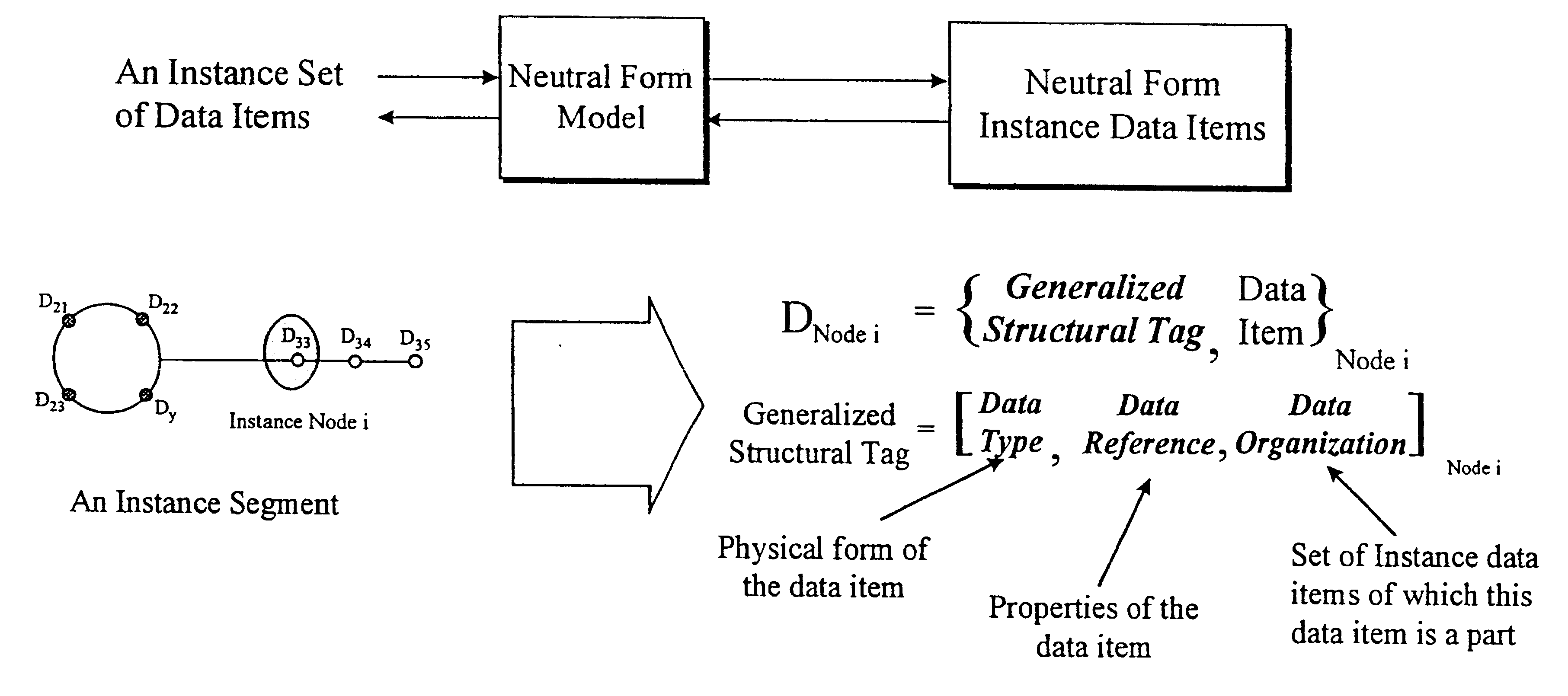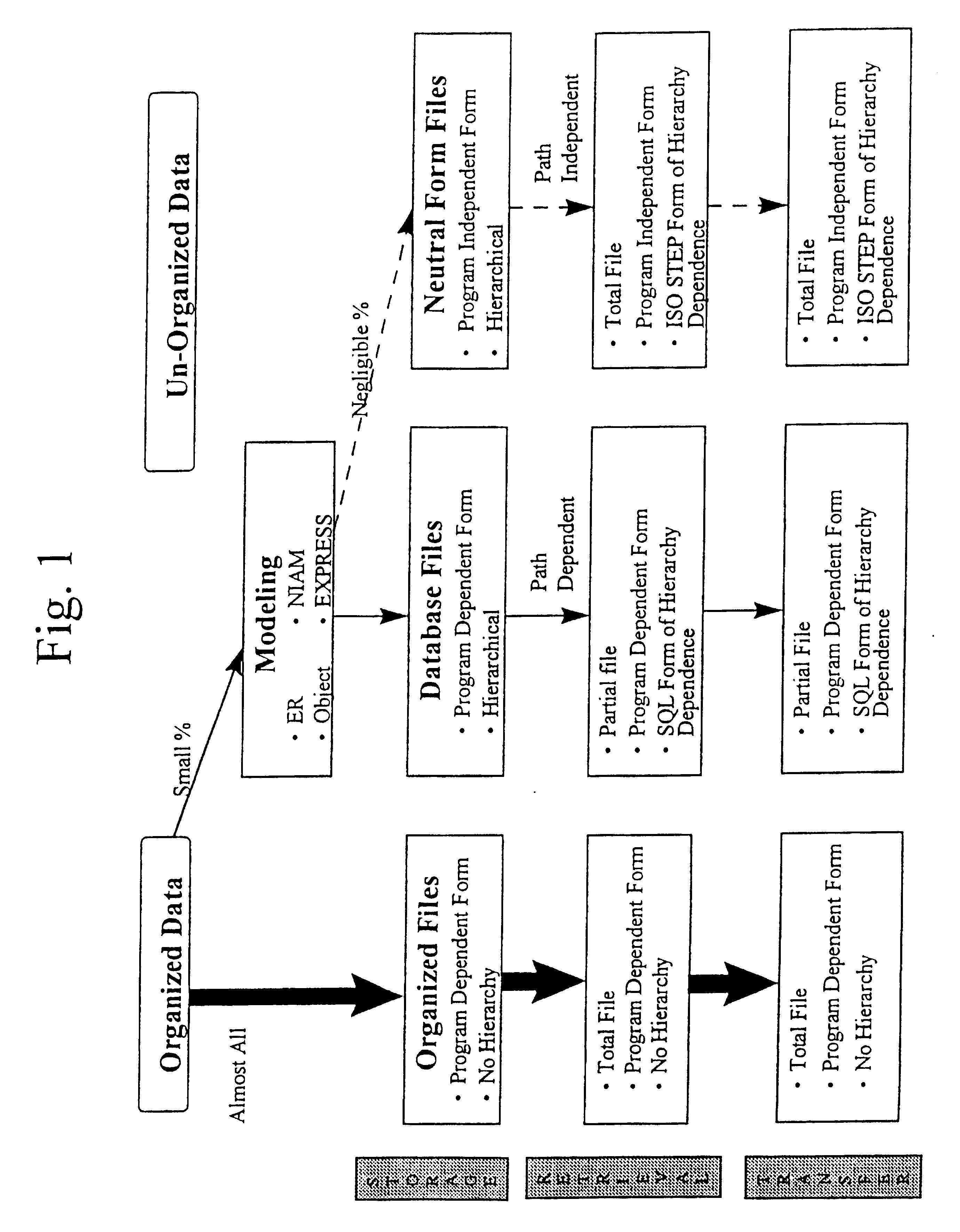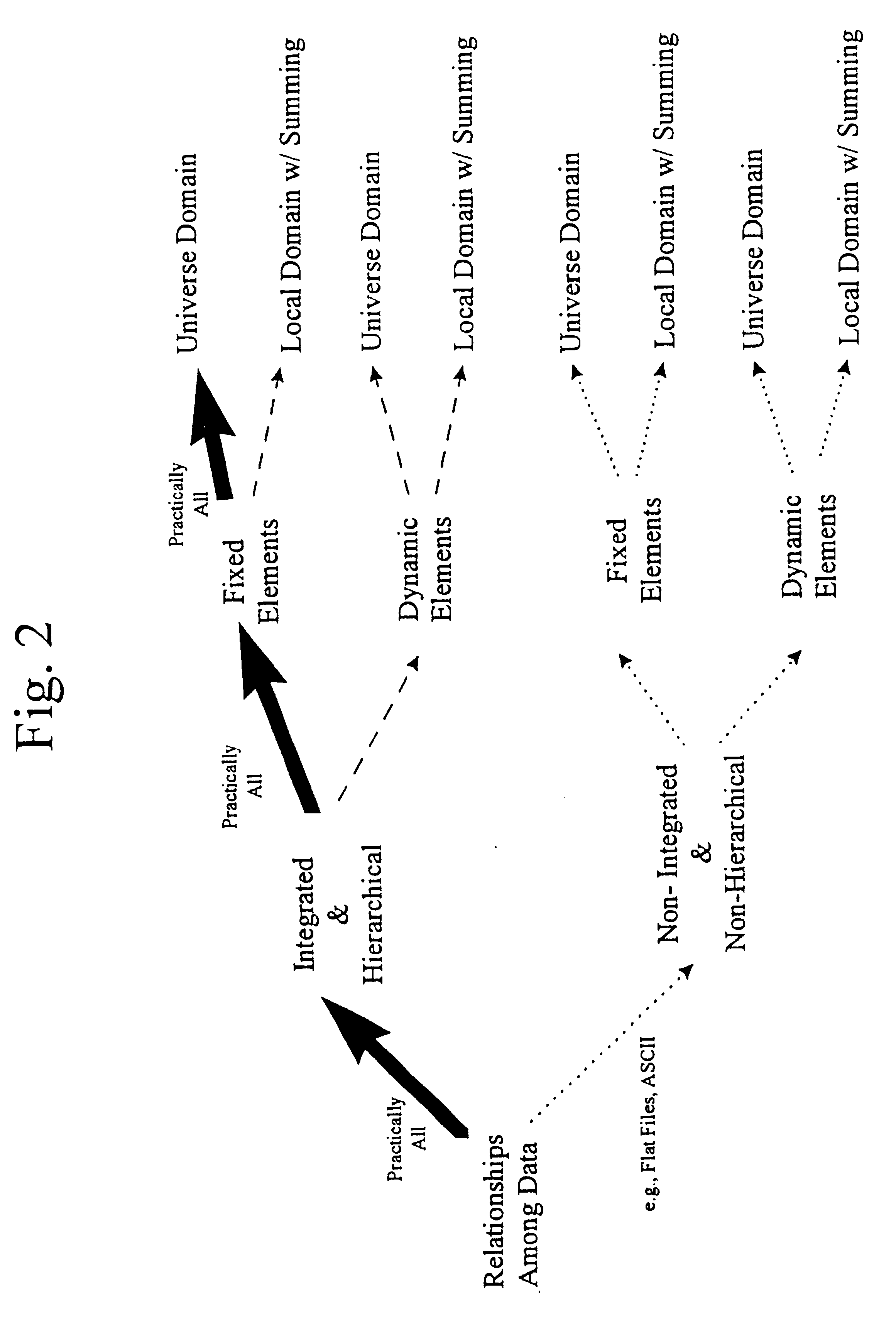Method for modeling, storing and transferring data in neutral form
a technology of information and data, applied in data processing applications, instruments, and multi-processing units, etc., can solve the problems of inability to achieve any practical success in data transfer, inflexibility and cost of modeling, and prior art techniques, so as to reduce the need for manual cleansing and reorganization
- Summary
- Abstract
- Description
- Claims
- Application Information
AI Technical Summary
Benefits of technology
Problems solved by technology
Method used
Image
Examples
case 2
in FIG. 5 represents the special case in which one instance segment (of universe B) is nested within another instance segment (of universe A). The nested instance segment (of universe B) is serving as the dynamic link to another instance segment of the same universe). However, in this case, the data references and corresponding data values to be related through dynamic linking at the instance level also include one or more coming exclusively from the instance segment (of universe A) to which the linking instance segment (of universe B) is nested. In such a case, and if there is an instance data set match between segment 1 of the universe of A and segment 2 of the universe of B, the dynamic link extends across the whole of segments 1 & 2 of the universe of A and segment 2 of the universe of B.
Taken as a whole, FIG. 5 shows: (a) that all of the data references from two instance segments of the same instance universe are dynamically linked and (b) that any portion of the data reference...
example 1
9.1 Example 1
Flash drums exist at a switchable number, such as ten (10), different locations in an example-postulated chemical manufacturing plant to partially separate the volatile components in a liquid mixture through sudden de-pressurization. Each flash drum has the basic characteristics summarized in FIG. 45, and the plant collects data on these characteristics on an hourly basis for each of the 10 flash drums.
The method of the present invention organizes this information so that it later can be stored or transferred. In the method of the present invention, information is organized through the division and modeling of the information in the context of one or more instance segments. The modeling presented in FIG. 46 is based upon a view of the flash drum problem as involving 4 separate and distinct instance segments--one for each stream entering or leaving the flash drum and one for the flash drum unit itself. Accordingly, four separate models are presented. Each is constructed ...
example 2
9.2 Example 2
This example illustrates the modeling of the flash drum problem presented in FIG. 45 of example 1 as the universe of the flash drum instance rather than as a series of instance segments that comprise the universe of that instance. FIG. 48 illustrates this model. As before, individual data references spanning the scope of the instance are organized into logical groups and sub-groups within a single comprehensive cluster. This cluster model is equivalent to the set of four separate but dynamically linked cluster models presented previously in FIG. 47.
As described in FIG. 12 above, the single cluster in FIG. 48 can be re-constituted as a set of associated clusters to facilitate data loading where there are one-to-many relationships or a user desires to split out certain one-to-one relationships. One such reconstitution is presented in FIG. 49. Cluster 1 contains the characteristics of the flash unit which are invariant with time, i.e., cluster 1 has an event time basis. Ac...
PUM
 Login to View More
Login to View More Abstract
Description
Claims
Application Information
 Login to View More
Login to View More - R&D
- Intellectual Property
- Life Sciences
- Materials
- Tech Scout
- Unparalleled Data Quality
- Higher Quality Content
- 60% Fewer Hallucinations
Browse by: Latest US Patents, China's latest patents, Technical Efficacy Thesaurus, Application Domain, Technology Topic, Popular Technical Reports.
© 2025 PatSnap. All rights reserved.Legal|Privacy policy|Modern Slavery Act Transparency Statement|Sitemap|About US| Contact US: help@patsnap.com



